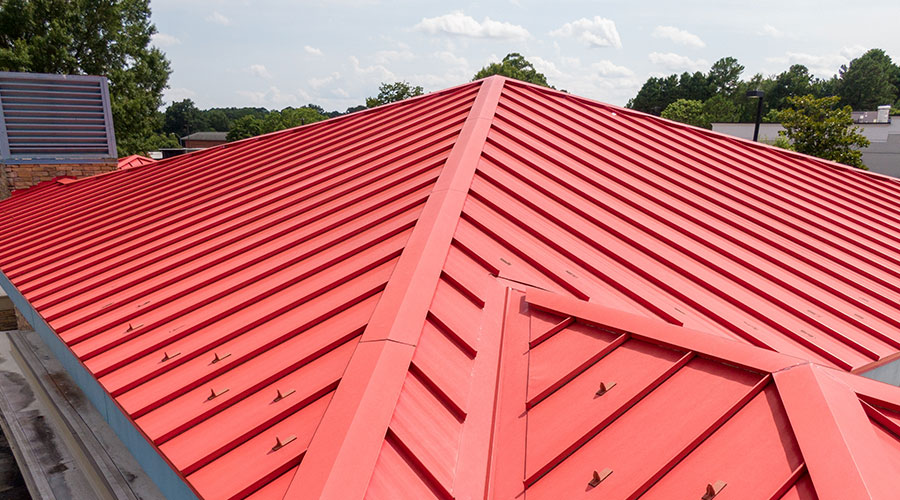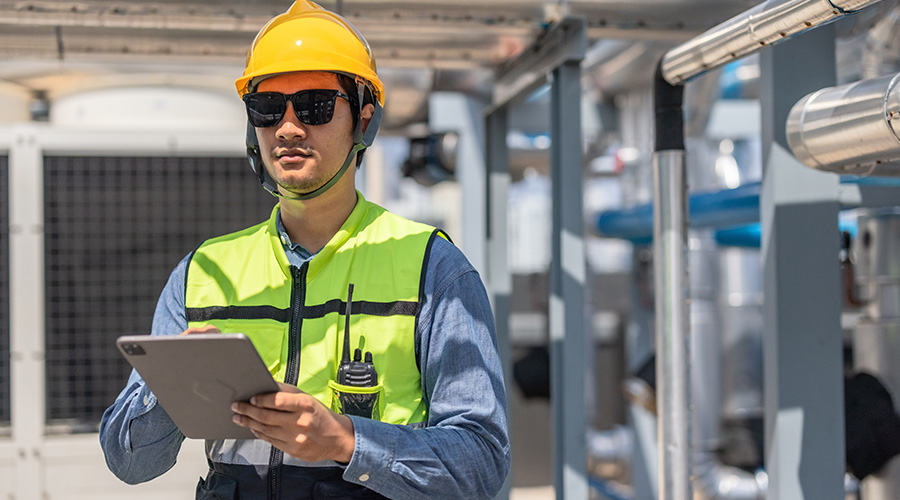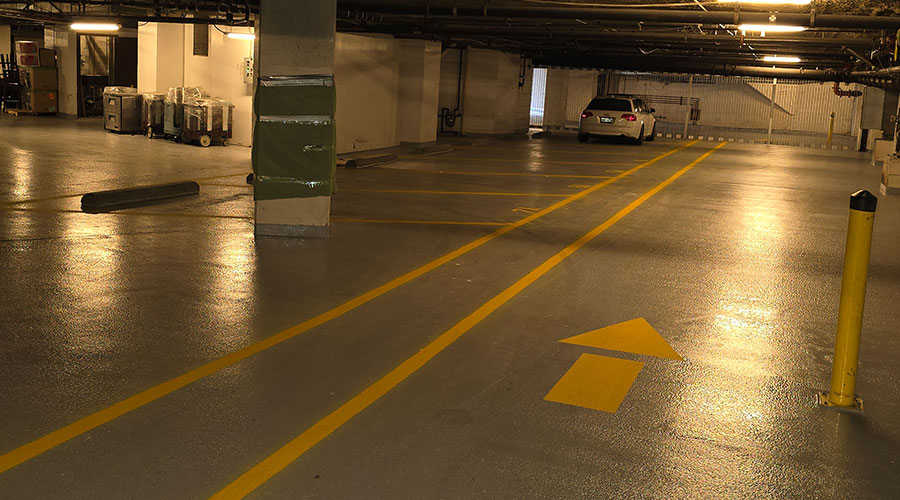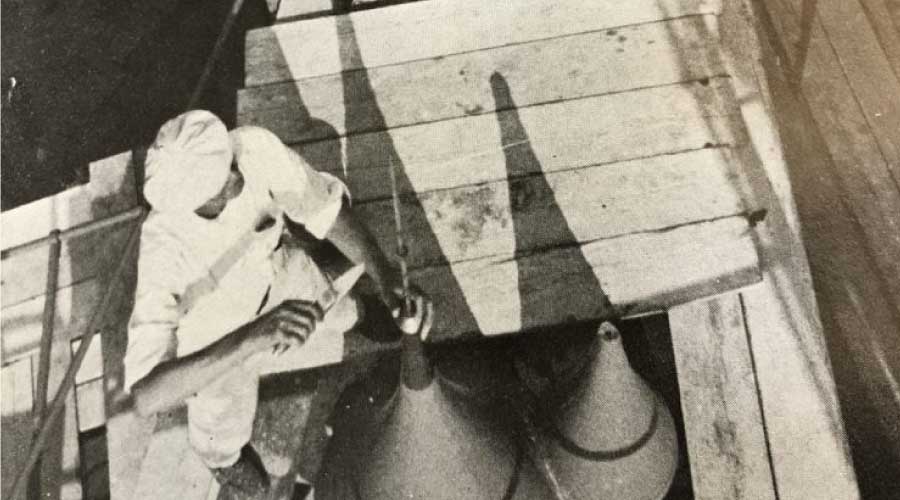High-Level Maintenance Decisions
Properly specified and maintained, aerial work platforms provide safe access to hard-to-reach areas
Maintenance often requires technicians to perform difficult tasks in awkward locations. Aerial work platforms enable front-line technicians to more effectively access facilities’ hard-to-reach areas to perform maintenance work more safely.
To ensure lift equipment performs as intended, managers must consider a series of important issues when specifying equipment and planning for its proper use and maintenance. Careful consideration can result in enhanced safety for crews and efficiency for the department.
Making a list
A preventive lift inspection before each use can reveal such issues as: missing safety features; loose fasteners; worn hydraulic seals, brakes, and control switches; and frayed wiring. Operators then can prioritize and correct them immediately or during scheduled repair time.
Each checklist should require the inspector’s name and contact number, date of inspection, and unit model and serial number, and managers should tailor it to the specific unit for which it is intended. Numbered checkpoints shown on a three-dimensional drawing of the unit ensure the operator identifies all points.
Note that the points in the accompanying checklist are only general guidelines. Each unit’s operating and maintenance manual should have manufacturer’s specific recommendations for preventive inspections, periodic preventive maintenance frequency and methods, and component-repair methods customized to that particular unit. Only trained and qualified maintenance technicians should perform these procedures.
Equipment size and reach
Reach is the main reason for selecting an aerial work platform. Technicians need to access hard-to-reach places quickly and safely. Aerial work platforms come in an increasingly wide variety of sizes and reach capabilities.
All types of platform lifts — articulating, telescoping, and scissors — can reach heights to about 30 feet. So up to that height, the differentiating factor might be size. Can the height, width, and length maneuver through doors, around obstacles, and reach the job site, and can operators store it in a reasonable amount of space?
The extreme conditions are where the reach capabilities of the different models begin to separate.
When workers need both extended height and greater reach, the choices narrow to telescoping, articulating, and combination telescoping and articulating units. The combination equipment might be the answer for maintenance tasks that require 60-foot height and 60-foot reach, as well as the need to reach vertical heights of 135 feet with little horizontal reach.
One combination unit can reach all of these job sites. Combination units have telescoping masts and are articulated, meaning they have two knuckles. Extending the telescoping masts yields a full height greater than the sum of the two retracted masts, making them more maneuverable and easier to store in a smaller space. For very high work sites, some units can extend to 300 feet.
Safety features
Worker safety is a team effort and includes the manufacturer, as well as the owner, managers, supervisors, instructors and workers. If anyone drops the ball, the consequences could be fatal.
Equipment with high reach and a small footprint present the greatest danger and can be prone to tipping. In one instance, an aerial work platform tipped over in use, and a worker with many years of operating experience fell 50 feet to the ground.
Investigation revealed multiple issues contributed to the fatality. No manuals were provided with the rental unit, no training was given for this use, and outrigger safety interlocks were wedged in the on position so the worker could operate the rig without the outriggers, which led to instability.
Safe operation of lift equipment requires several key components.
First, higher management must be responsible for a written policy on aerial work policies.
Second, manuals for operation and maintenance also must accompany each unit, must be reviewed before each use, and must be stored on the unit for easy access.
Third, owners must provide training in both operation and maintenance for all users and supervisors, and training must take place with each use of the rental equipment and for seldom-used equipment. It is more likely users will work with unfamiliar features, possibly for the first time.
Finally, supervisors need to monitor use closely, especially during the inspection and preparation leading up to each use as a way of ensuring operators check and use all safety features as recommended.
Before each job, operators also should check the work area for unsafe floor or ground conditions, such as soft or unstable areas, drop-offs, holes, and uneven or sloped surfaces. Each aerial work platform has specific ratings for maximum lean, tilt, and reach. Operators should compare these ratings against work conditions to ensure the work platform is safe to use in this area.
Operators also should locate utilities, such as electrical cables, panels, chemical, gas, and drain lines and covers. They also should identify and mark overhead obstructions, including piping, ceiling joists, beams, and tight clearances where necessary to ensure they are visible, enabling work-platform operators can maneuver around them.
The next level
Managers can provide an even greater level of safety by making sure operators of aerial work platforms use three pieces of equipment: lift attachments, electrically insulated platforms, and fall-arrest systems.
Material lift attachments enable workers to move materials up and down without carrying them up to the platform, which also saves time.
Electrically insulated platforms facilitate working on power-distribution systems safely without using valuable time to open and close breakers.
Attaching a fall-protection harness to the work platform as required by the Occupational Safety and Health Administration (OSHA) means the worker can move around safely at heights outside the work platform.
Only experienced maintenance personnel with proper training in the use of each specific attachment on a specific aerial work platform should use these attachments. Knowledgeable preparation and planning with a close eye on safety is essential in using these pieces of equipment, since some of them might change the unit’s balance or weight distribution, shorten the reach or rotational range, or limit the allowable slope on which the platform wheels can safely rest without tipping.
Standards, such as those provided by OSHA, govern training and the way aerial work platforms should be operated and maintained. These standards go into considerable detail covering training responsibilities required of dealers, owners, users, operators, lessors and lessees.
Still, these are only minimum requirements. Making a habit of knowing and following proper procedures and safety steps with thorough training is the best path to successful risk management and efficient operation.
Finding the difference
The outer limits of capacity and unique features often differentiate platforms with overlapping capabilities. Managers need to specify equipment that meets department needs under as many circumstances as possible.
For example, if the lift is perfect in most respects but won’t reach 30 feet to change high-bay lighting, is too large to access an indoor job site through doorways, or can’t maneuver under existing grade conditions, its use is severely limited.
This is why it is so important for managers to talk to other users and have the seller’s trained instructors demonstrate the unit onsite as part of the training for trainers, maintenance technicians and operators.
Any shortcomings will be more readily apparent, and managers can change the specifications before making the final purchase decision or deciding to rent, if infrequent use or other considerations indicate renting is the best option.
Aerial Platform Safety Checklist
Aerial work platforms require careful inspection and testing to operate safely and efficiently. The following items can form the basis of comprehensive inspection practices for platforms:
• The operator’s manual is stored and available on the equipment.
• Up-to-date maintenance history records are stored on the unit.
• All safety labels are in place and clearly legible.
• Controls and control panels are clean and clearly legible.
• Safety indicator lights work properly.
• Horns and motion alarms work properly.
• Guardrails, chains and gates are in place and working properly.
• Switch guards and mechanism guards are in place and work properly.
• Platform extensions slide freely, and safety-locking pins on extensions are in place.
• Work platform and extensions are dry,
clear and free of debris and oil.
• A thorough surface inspection shows no cracked welds or components, fuel or hydraulic leaks, or damaged control
cables or wiring.
• All emergency controls are in good operating condition.
• Work-platform controls and ground controls are properly guarded against unintended operation.
— Thomas A. Westerkamp
|
Related Topics:











